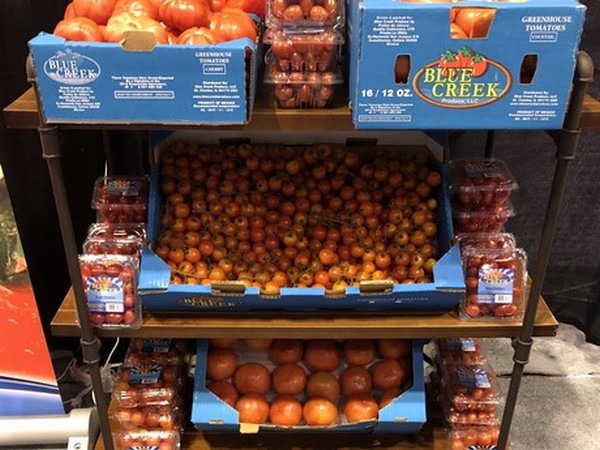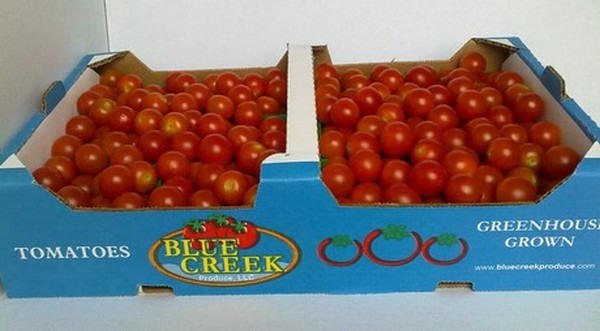Tomato supplies in North America are shifting right now to include many of the local deals seen at this time of year around the country.
Roger Riehm of Bradenton, Florida-based Blue Creek Produce LLC. says now that Florida’s season is wrapped up, states such as Arkansas, Tennessee, and South Carolina have started local production, Alabama is about a week away, and New Jersey and Michigan will too soon after the July 4th weekend. All of these are largely open-field local production.
“And there’s also California production trickling in through Baja California into San Diego. And as you go up the coast, the California deal also coincides with the midsection of the U.S. They’ve been picking and packing already,” says Riehm.

Mexico producing too
At the same time, Mexico is still growing Roma, round, grape, and cherry tomatoes, and its greenhouse tomato production goes virtually year-round. “There are more greenhouses in the U.S.--even the midwest in Tennessee and Kentucky, but also Ohio. The U.S. has gained a lot of greenhouse production of tomatoes,” says Riehm. And then there are Canadian greenhouse tomatoes as well, which he says seem to last longer and longer into the season each year.
Overall, there are a lot of tomatoes. “I think that there’s more and more expansion of farms. There definitely continues to be added acreage,” he says.
There is also a lot of development around the types of tomatoes. “They continue to develop new seeds for better flavor tomatoes or ones that last longer on the shelf or have a better Brix count for a sweeter tomato or redder color. They’re constantly innovating to appeal more to consumer tastes,” says Riehm.
Core varieties plus new options
And this is all making way into the allotted shelf space for tomatoes, which he says continues to be a top category in the grocery store. “There are still the core tomatoes: cherry, grape, Romas, rounds, and TOV. But occasionally, they’ll throw in some new varieties to see how consumers will respond to them,” says Riehm.

Meanwhile, demand is more spread out currently, given all the local deals that are underway. “And retailers tend to want local U.S. tomatoes for their shelves at this time of year. Demand will increase into July 4th, and after that, it’s more demand for local tomatoes,” he says. “However, we’re also watching at this time of year to see if those local tomatoes can hold up to the weather. Whether it’s heat, rain, storms, or something else, can they continue to supply the grocery stores without showing quality issues?”
Along with watching the added tomato volume available at this time of year, growers and shippers also continue to contend with an issue that hasn’t gone away: the effect of COVID on the workforce. “The packing houses continue to have this challenge with COVID and available workforce. As we’ve seen some cases increase, will we have enough pickers out there picking? How much will labor be affected by surges in the area?”
High grower costs
What also continues to challenge growers especially are the increasing farm costs from inputs such as fertilizer, packaging, fuel, and more. “It all continues to rise, which makes it difficult for pricing. We’d like to see better pricing out there with these costs. But with the amount of tomatoes in so many different areas, it’s a lot less than where we want it to be. There’s just too much availability for demand at this point,” says Riehm.
He adds what would likely only change pricing in the near future would be a crop affected by local weather and thus, impacting availability.
 For more information:
For more information:
Roger Riehm
Blue Creek Produce
Ph: (630) 513-3075
[email protected]
www.bluecreekproduce.com
